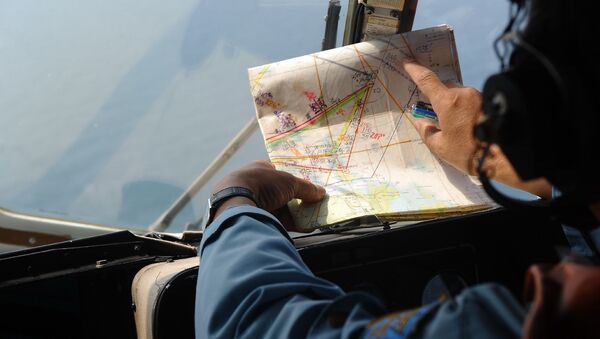Investigators looking into the disappearance of the Malaysian Airlines’ Boeing 777 airliner which vanished in 2014 with 227 passengers and 12 crew members aboard might’ve made a serious error while trying to use incompatible satellite and radar data to try and find the missing plane, the Daily Express reports, citing an anonymous air safety expert from Brussels.
However, the investigators apparently used “the last radar point instead of the first satellite data point” in order to fit both the satellite and the radar data, which was a mistake, the expert argued, claiming that the Australian Transport Safety Bureau previously admitted that radar and satellite evidence “could not be used in conjunction”.
"The June report avoided discussion of possible manoeuvres between the 6.22 pm UTC last radar point and the 7.41 pm UTC arc point, except for range estimates, due to the large number of possible scenarios", the expert explained. "The analysis instead used starting locations on the 7.41 pm arc, which were able to be reached from the last radar fix using reasonable flight speeds".
The expert argued that “this is a smoking gun” which “admits the first 6.26 pm handshake arc and the 6.22 pm last radar point are incompatible”.
"This can only be if the arc theory is flawed or if the last radar point is wrong," they remarked. "As the whole search was based on the use of the satellite arc, it is inconceivable that the arc theory is flawed. Therefore one must conclude that the last radar point is incorrect."
READ MORE: Hacker Claims MH370 Could Be Compromised by Computer ‘Nerd’
Malaysia Airlines Flight MH370 vanished above the South China Sea while en route to Beijing from Kuala Lumpur in March 2014, after making a leftward detour and flying toward the Indian Ocean; large-scale search operations launched after the plane’s disappearance have yielded no results.



